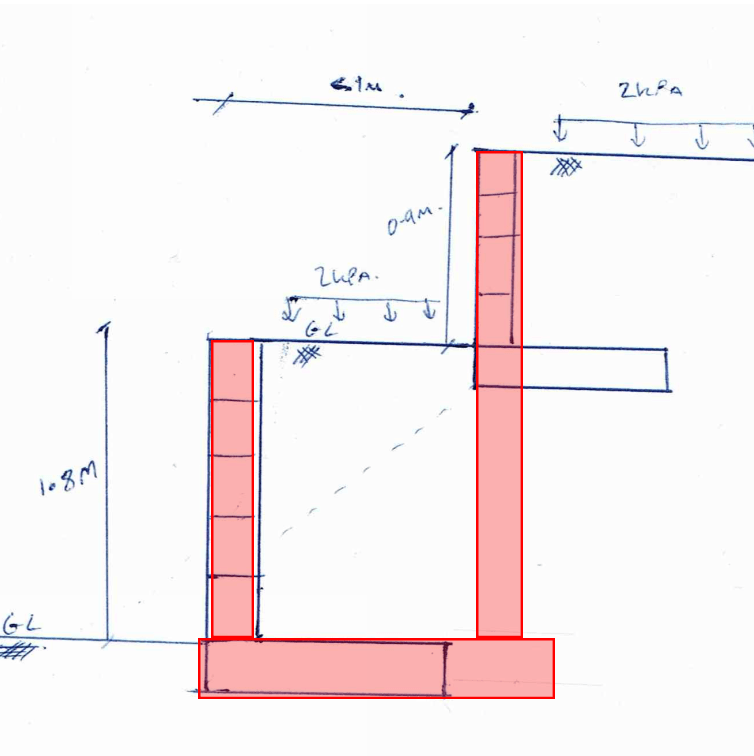
A minimum FOS of 2 was required for the limit equilibrium analysis. The cantilevered bored pile retaining wall solution was analyzed for stability based on a metre strip of wall using the WALLAP (version 5.01) programme and the Burland-Potts method (net available passive resistance method). Keywords: Special retaining wall, Relief shelves, Earth pressure, Stability of wall, Bearing pressure, Overturning moment and bending moment. Analytical results of active earth pressure, nodal reactions, and bending moments with pressure relief shelves have been close agreement with the Staad-Pro. It is also observed that, the average saving in cost of construction is 15% to 25% by the provision of relief shelves over the conventional cantilever retaining wall. In practice, there is limitation of using more number of shelves, but up to three shelve may be used economically for high retaining walls. The pressure relief shelves have been extend up to the failure plane to achieve the stability of the structure. The pressure distribution diagram changes much due to addition of shelves. The conclusions in this thesis drawn based on the discussion and results obtained analytically and using Staad-Pro. The concept of providing pressure relief shelves on the backfill side of a R.C.C retaining wall reduces the total earth pressure on the wall, which results in a reduced thickness of the wall and ultimately i0n an economic design of a cantilever wall. Cantilever retaining wall with pressure relief shelves is considered as a special type of retaining wall. In this paper stability check for a cantilever wall is obtained using a computer program that calculates various sections satisfying the stability criteria, according to the height and properties of earth that the wall is required to support.Ībstract: This paper presents the results of Static analysis and Design of retaining wall with and without shelves. Different modes of failure have different factors of safety. The ratio of resisting forces to the disturbing forces is the factor of safety, and this factor of safety should always be greater than unity for the structure to be safe against failure with respect to that particular criteria. The main considerations are the external stability of the section with the help of codal provision i.e ACI Satisfying the external stability criteria is primarily based on the section giving the required factor of safety. The present research focuses on designing the cantilever type of wall for overturning, sliding and bearing. The lateral force due to earth pressure is the main force that acts on the retaining wall which has the tendency to bend, slide and overturn it. They can be of many types such as gravity wall, cantilever wall, counterfort wall and buttress wall among others. Retaining walls are structures that are used to retain earth (or any other material) in a position where the ground level changes abruptly. It also can be used as a concrete mixture so as to produce distinctive textures and
WALLAP RETAINING WALL DESIGN FREE
It are often used as an economical filling and wadding around water tanks blended with natural sands to boost concrete shrinkage and water demand and as a fabric to back-fill trenches with, as construction material in strengthened earth retentive walls, strengthened soil beds and strengthened versatile pavements as a fill material because of its stability, free debilitating nature and sensible resistance characteristics.

Recycled device mud has several sensible applications round the home and in construction. It is a fabric that possesses pozzolanic property similarly as has coarser contents in it whereas alternative materials like ash possess solely pozzolanic property and no coarser soil particles.


It known that crusher dust exhibits high shear strength and is useful as a geotechnical material. Crusher dust/stone dust is a solid material that is generated from the stone crushing business that is copiously offered in India.


 0 kommentar(er)
0 kommentar(er)
